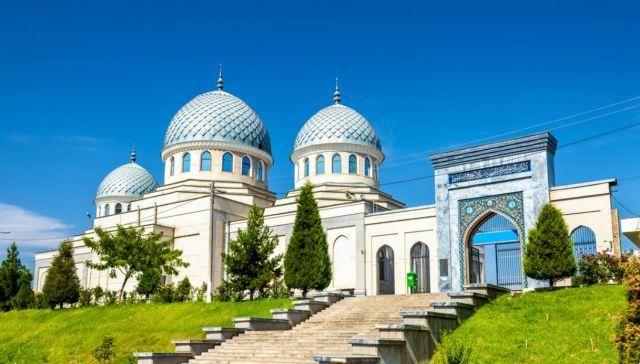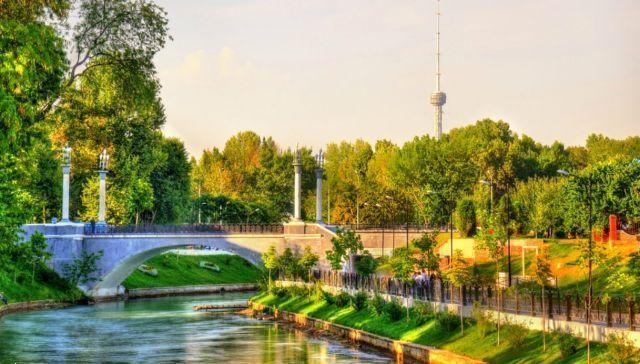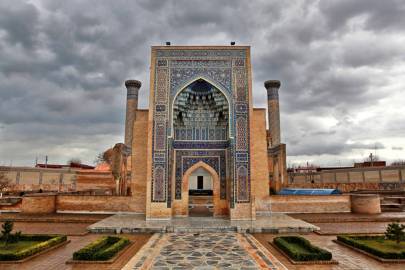 What to see in the capital of Uzbekistan: the ancient mosques, the cathedral, the Tamerlane Museum and the tallest tower in Asia, here's what to see in Tashkent.
What to see in the capital of Uzbekistan: the ancient mosques, the cathedral, the Tamerlane Museum and the tallest tower in Asia, here's what to see in Tashkent.
Tashkent is the capital of Uzbekistan. An ancient city on the Silk Road that ran from China to Europe, little remains of its past after a terrible earthquake in 1966. Today it lives and grows and is populated by 2,5 million people. The architectural attractions of Tashkent are distinguished by its unique and original style. It united the traditions of Central Asia, enriched by the achievements of Islamic architecture and the influence of late XNUMXth-century European urban planning.
The city, which is about 300 km from the other pearl of Uzbekistan, the wonderful Samarkand, partly resembles its features. Start your visit to the capital of Uzbekistan from madrasa Kukeldash, an ancient medieval structure located near the Chorsu bazaar and the Chorsu metro station. This madrasa was built around 1570 by the Shaybanid dynasty of rulers. It was built with yellow bricks and has a traditional square shape with a large portal and an internal courtyard with cells inhabited by students. The portal is 20 meters high and has two towers on the sides.
In 1830-1831 the first floor of the madrasa was demolished and the bricks were used to build the nearby Madrasa Beklarbegi. It has a troubled history: damaged by the earthquake of 1868 and subsequently rebuilt in 1902-1903, it was rebuilt again in 1950 and became one of the few religious buildings to survive the earthquake of 1966. It was converted into caravanserai in the 1990th century then as a fortress and in the XNUMXth century it became a museum, first of atheism and then of popular music. In XNUMX, the building once again became a madrasa.
Then visit the symbol of the capital of Uzbekistan: the complex of Hazrat Imam, a square that includes a system of religious buildings. Among these is the mausoleum of the first imam of Tashkent Hazrati Imam. Is called mausoleum Kaffakl Shoshi, dedicated to the Islamic scholar and poet Abu Bakr Kaffal Shoshi who lived in the Shabanyd era. The building dates back to the 16th century and contains the tomb of the poet and that of other personalities, including three sheikhs. In the building there is also a khanqa, a place reserved for the spiritual retreat of the Muslim devotee.
Then move towards the madrasa Barak Khan, built in the 1532th century by the then governor of the capital of Uzbekistan Nauruz Ahamad Khan. The name Barak Khan means lucky ruler and was the nickname of the governor because his regency was considered lucky. The building was completed in 1868. The madrasa was damaged by the earthquake of 2007 and then restored. Since XNUMX it has housed the offices of the spiritual administration of Central Asian Muslims. The dome is a beautiful blue color and inside there are a series of colors with octagonal figures.
Continue your tour of the capital of Uzbekistan at the Hazroti Imam mosque built in 2007 at the behest of President Karimov. Made up of two minarets, it has a style that recalls the mosques of the Uzbek tradition of the XNUMXth century. The complex also includes the Telyashayak mosque and the Moyie Mubarek library museum, where Osman's Koran, the oldest in the world, is kept.
The Cathedral of the Assumption of the Virgin is also beautiful Dormition Cathedral. It was built in 1871 and expanded in 1990. Like most religious buildings in Central Asia, the church was assigned to the “Living Church” movement, promoted by the Bolsheviks; closed to worship in 1933, from 1945 it became a military depot. Reopened for worship in 1945, it was dedicated to the Dormition of the Virgin and became the seat of the bishop. The bell tower was rebuilt in 1990 next to the central dome. The interior was renovated with greater pomp for the visit of Patriarch Alexy II in 1996. The cathedral was renovated and a new bell tower was built in 2010.
Close your visit to the capital of Uzbekistan with the Amir Timur Museum opened in 1996 and dedicated to the Mongolian warlord Amir Timur, known as Tamerlane. The blue dome of the museum resembles that of the Gui ir Amir mausoleum in Samarkand although the museum is built according to the canons of medieval architecture. Today there are more than 5 thousand exhibits and 2 thousand are displayed in the exhibition halls. In particular it is possible to see the genealogy of Tamerlane, his coming to power and his military campaigns and also finds from the Timurid dynasties (maps, weapons, coins, miniatures and rare manuscripts).
Also admire the television tower of Tashkent with various restaurants and beautiful views of the city. Built in 1978, 375 meters high, it is the tallest in all of Central Asia and the eighth in the world. It has an observation point at 97 meters.






